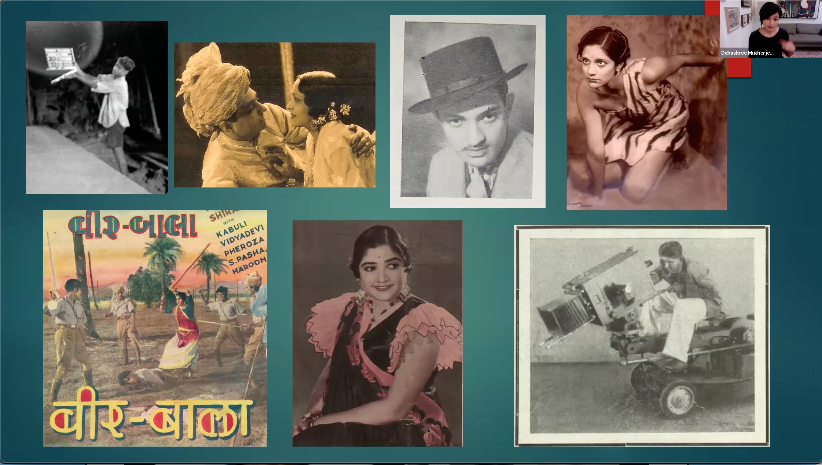Exploring Mumbai’s Cinematic History

As the country’s financial capital and major center of cultural production, Mumbai (erstwhile Bombay) sits at the confluence of economic activity, cinematic enterprise and ideas of modernity. On December 3rd 2020, Columbia Global Centers | Mumbai organized a lecture and panel discussion featuring Debashree Mukherjee, Assistant Professor of Film and Media at Columbia University, marking the launch of her new book, Bombay Hustle: Making Movies in a Colonial City (Columbia University Press and Penguin Random House 2020). Offering a panoramic portrait of the consolidation of the Bombay film industry during the talkie transition of the 1930s, and set in the backdrop of momentous changes such as the anti-colonial movement, city worker strikes, and the rise of an entrepreneurial trading class, Professor Mukherjee illustrated the manner in which the Bombay film industry historically energized a range of practices and practitioners, playing a crucial and compelling role in the life and imagination of modern India. The program was part of the ‘The Columbia Global Book Series’, a partnership between the Global Centers and Columbia University Press, with Penguin Random House, the book’s publisher in India, as an outreach partner.
Drawing on her original archival research and innovative transdisciplinary approach, Professor Mukherjee shared how cinema extends into every area of urban life and the screen is only one part of an ecology of people and networks that mutually constitute a cine-ecology. Using this term as a conceptual touchstone and methodological lens for examination, she probed the industry’s myriad set of people situated in different roles and functions, institutions, technologies, and environments that collectively shaped the production and circulation of cinematic meaning in the historic period of 1930s Bombay. The lens of cine-ecology also offers a dynamic and inclusive framework that not only addresses the complexities of filmmaking but also extends to cinema’s relations to the larger urban cityscape of Bombay and its other industries including cotton trade, communications and media such as radio and gramophone, and literature.
Professor Mukherjee considered questions of film, finance, technology and urban history in the book to paint a picture of the Bombay film industry as an entity with its own life force and rhythms that was in a constant state of becoming. She used the term ‘hustle’ to bring to fore the myriad transactions and negotiations enmeshed in the sphere of the Bombay film industry- from speculations in raising finances and raising organizational and professional respectability, to the daily struggles of cine-workers, including actors, stunt persons, extras and others, that were complicated by their class, caste and gender vulnerabilities.
The next segment of the program saw comments on the book from leading film scholars- Tejaswini Ganti, Associate Professor of Anthropology at New York University, and Ranjani Mazumdar, Professor of Cinema Studies at the School of Arts and Aesthetics at Jawaharlal Nehru University. The question and answer session that followed was moderated by Dr. Ravina Aggarwal, Director of Columbia Global Centers | Mumbai, and generated lively participation from the audience. The discussion centered around the role of fans, workers in 1930s Bombay and the relations of the film industry with other forms of labor and industry, the influence of the national political climate, and technological elements in cinema’s progress over the decades. Panelists also reflected on the similarities and differences between the Bombay film industry of the 1930s and present times.
The program was also part of the Center’s continued focus on urban knowledge systems, and provided a platform for understanding practices of urban inclusion and history while examining film as a methodological tool in the study of history as part of the Center’s Historical Methodology initiative. From the post-program feedback collected from participants, a majority indicated that the program had helped advance their knowledge of the Indian film industry and practices, the history of Mumbai and urban inclusion, and historical research methods, and would help them in their own research in their role as academics, researchers, educators, cultural professionals and students.